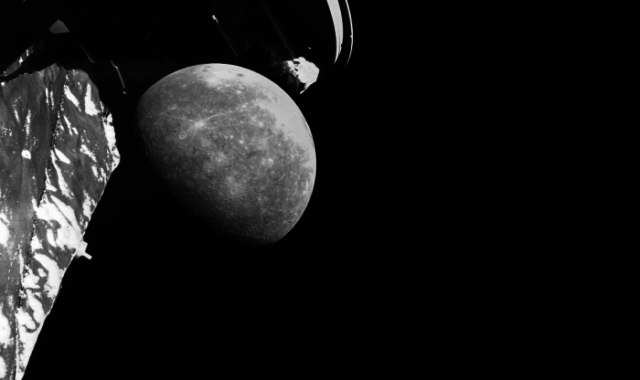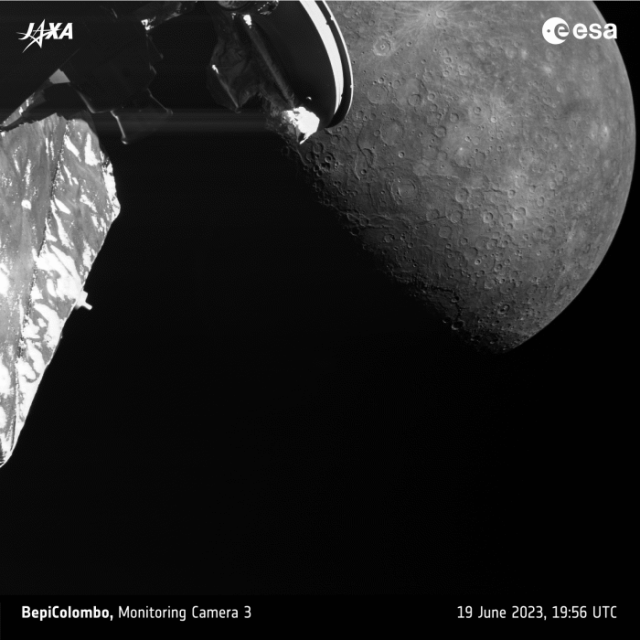
Mercury
The joint mission of the European and Japanese Space Agencies (ESA and JAXA) has just completed the third of six planned flyby of Mercury, transmitting dozens of unique images to Earth.
The spacecraft was launched almost five years ago in October 2018 in order to study the surface of Mercury. The mission involves two independent spacecraft Bepi and Mio, which operate in different orbits.

Mercury
The closest image of Mercury's surface was taken from a distance of only 200 km. Unfortunately, the lens caught the night, heavily darkened side of the planet. The next picture was taken 12 minutes later from a height of 1170 km. The images show fragments of the landscape, including craters and the Beagle Rupes escarpment, a 595 km long tectonic strip formed during the cooling of Mercury. Another object of study was a crater with a diameter of 217 km, which can tell a lot about the early history of the planet. The next flyby is scheduled for September next year, which will require a large amount of preparatory work. After that, at the beginning of 2026, the probe will split into two orbiters belonging to ESA and JAXA, while the Japanese will study magnetic fields, and the European will study the geographical features of Mercury.

Mercury
Alexander Ageev
